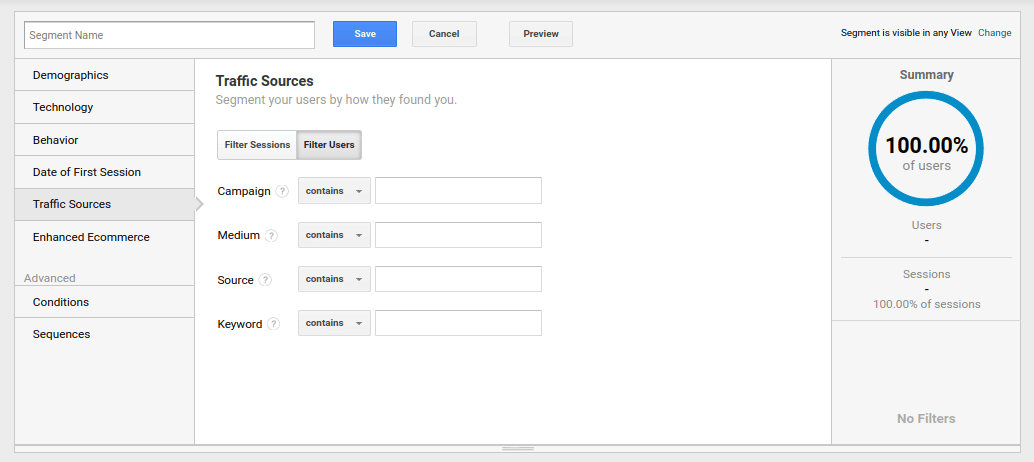Step-by-Step Tutorial: Remarketing In Google Analytics
Step-by-Step Tutorial: Remarketing In Google Analytics
Blog Article
Taking Advantage Of Remarketing in Google Analytics: A Comprehensive Guide
Using remarketing in Google Analytics offers services a tactical side in getting to out to possible consumers. This overview will shed light on the important actions involved in harnessing the full possibility of remarketing in Google Analytics, leading to improved advertising and marketing end results.
Understanding Remarketing in Google Analytics
Remarketing in Google Analytics allows businesses to strategically target individuals that have previously engaged with their site or mobile application. By leveraging information from Google Analytics, services can produce tailored remarketing checklists based upon customer behavior, such as web pages gone to, activities taken, or specific goals achieved. This effective device allows organizations to re-engage with users that have revealed rate of interest in their services or items, ultimately raising the possibility of conversion.
Comprehending the different kinds of remarketing techniques is critical for a successful campaign - What Is “Remarketing” In Google Analytics?. Google Analytics supplies different options, including basic remarketing, dynamic remarketing, and remarketing listings for search ads (RLSA) Each type offers an unique function and can be tailored to meet specific advertising goals
In addition, assessing the performance of remarketing campaigns is crucial for maximizing outcomes. Google Analytics offers useful understandings right into the effectiveness of various remarketing techniques, permitting companies to make data-driven choices and fine-tune their targeting strategy. By continually checking and changing remarketing initiatives based on analytics information, services can take full advantage of ROI and drive success in their marketing campaigns.
Setting Up Remarketing Projects

After establishing target market lists, the next action is to connect Google Analytics with Google Advertisements. By connecting these two systems, businesses can effortlessly transfer target market lists from Google Analytics to Google Ads for remarketing objectives. This integration permits more specific targeting and far better campaign performance.
When the accounts are connected, services can produce remarketing campaigns in Google Advertisements using the target market details previously specified in Google Analytics. These projects can be customized with specific advertisement creatives, messaging, and bidding approaches to effectively re-engage with past visitors and drive conversions. By following these steps, services can utilize the power of remarketing to boost their advertising initiatives and enhance ROI.
Making Use Of Target Market Division Approaches

Predefined sections in Google Analytics allow you to swiftly examine typical audience categories fresh individuals, returning individuals, or users who finished a particular goal on your site. Personalized sectors, on the various other hand, enable you to produce unique sectors based on details standards that are very important to your service objectives. Dynamic remarketing lists immediately adjust based on user habits, showing personalized ads to individuals who have actually connected with your site in specific methods.
Analyzing Remarketing Performance Metrics
Upon evaluating the effectiveness of remarketing campaigns in Google Analytics, the evaluation of key efficiency metrics provides beneficial understandings right into audience involvement and conversion prices. By delving into metrics such as click-through prices (CTR), conversion prices, cost per purchase (CPA), and return on advertisement spend (ROAS), online marketers can gauge the success of their remarketing initiatives. Assessing address these metrics enables online marketers to enhance campaigns, fine-tune target market targeting, and allocate budgets efficiently to enhance overall remarketing performance.
Enhancing Remarketing Approaches
When refining remarketing techniques in Google Analytics, concentrating on target market segmentation is paramount for achieving project success. By splitting your target market right into details sections based upon their page habits, demographics, or interests, you can tailor your ads a lot more effectively per group. This targeted method enhances the possibility of engaging customers that have actually currently shown rate of interest in your services or items, resulting in higher conversion prices.
One more crucial element of optimizing remarketing methods is continuously testing and refining your projects (What Is “Remarketing” In Google Analytics?). A/B testing different ad creatives, messaging, or offers can help you identify what reverberates finest with your target market and drives the most conversions. By examining the efficiency of these tests in Google read this article Analytics, you can make data-driven choices to optimize your remarketing efforts further
Furthermore, leveraging dynamic remarketing can dramatically enhance your project results. This feature permits you to reveal customized advertisements to individuals based on their previous communications with your internet site, showcasing items or services they have formerly checked out. By supplying tailored web content to individuals based upon their behaviors and passions, dynamic remarketing can help raise engagement and drive conversions.
Final Thought
Finally, using remarketing in Google Analytics is a critical method to target customers that have actually formerly engaged with a site. By creating personalized target market lists and making use of target market segmentation strategies, companies can maximize remarketing projects for boosted conversion prices. Examining efficiency metrics and continuously optimizing strategies are important for optimizing the efficiency of remarketing efforts.
Google Analytics offers numerous options, including common remarketing, vibrant remarketing, and remarketing listings for search advertisements (RLSA)After establishing up audience listings, the next action is to connect Google Analytics with Google Advertisements. By connecting these two systems, businesses can seamlessly transfer audience checklists from Google Analytics to Google Ads for remarketing functions.Once the accounts are connected, services can create remarketing campaigns in Google Ads making use of the target market notes formerly specified in Google Analytics.When refining remarketing methods in Google Analytics, concentrating on audience segmentation is critical for accomplishing project success.
Report this page